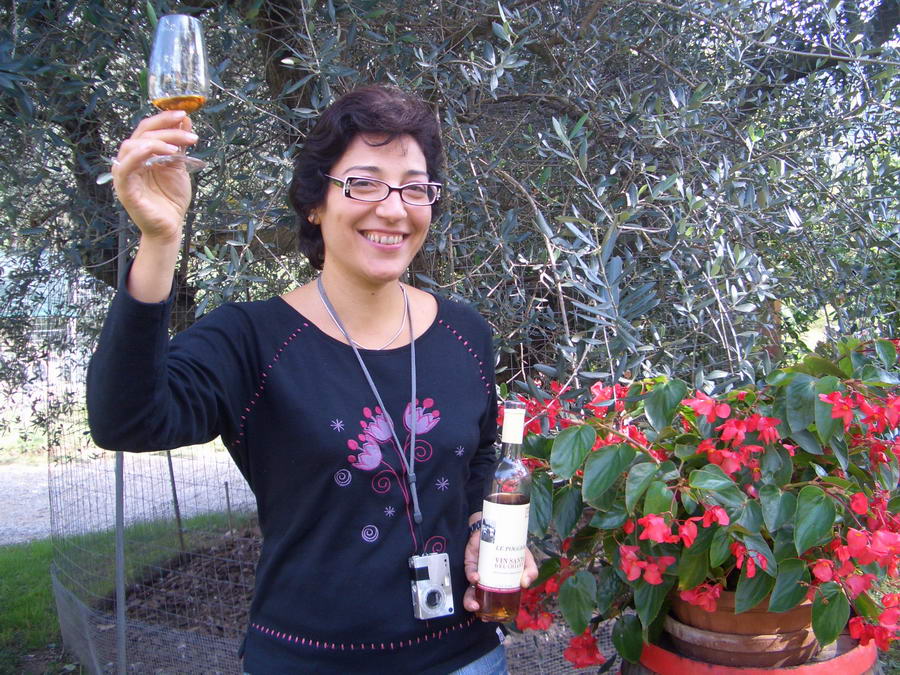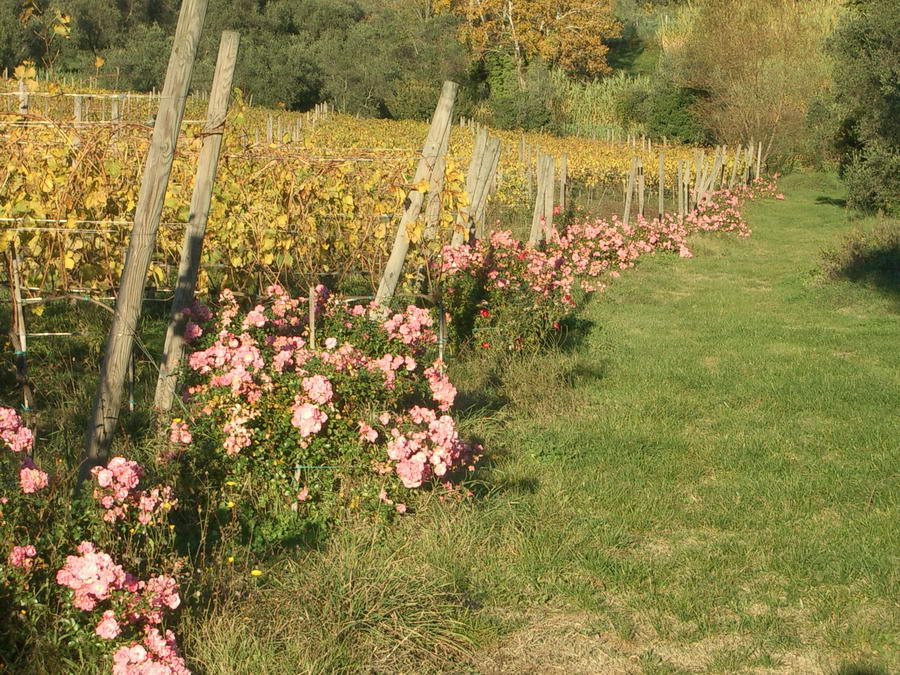How we produce Wine at Le Poggiola
The setting up of the vineyards took place in 1976 with a density of 2850 plants per hectare.
In 2001 2,5 more hectares of vineyard were planted with a density of 4460 plants, introducing new varieties amongst which: Fermentino, Merlot e Cabernet.
The wines produced are: a young Chianti DOCG, scented, vivacious and of good alcoholic strength, white-rose’ DOC wines from Central Etruria, Vinsanto DOC from Chianti, and recently a NEW Tuscan Red IGT called ‘CIUO NERO’ has been bottled; based on Merlot, Cabernet, Sangiovese, Canaiolo.
The collecting of grapes takes place in October. It’s done by hand and with great care as it is a very delicate moment for a successful wine production.
It is important for grapes to have reached an optimal maturation, that is a 20% sugar content for Chianti wine, while for white and rose wine we prefer to collect the grapes a little earlier to obtain a more elevated acidity value.
We follow our grapes’ maturation with some samplings of them, verifying and checking the sugar content. In doing this we realise when the best time to pick them is.
Usually white grapes for white wine are picked before black grapes. It is at this time that we choose the grapes for ‘Vin Santo’.
For this we must choose the best grapes which are not bruised, the grapes that are more likely to wilt better.
Then we pick the grapes for white and rose’ wines.
We then choose the grapes for the Chianti.
For the Chianti wine production the harvested grapes, once picked from the bunch, are macerated for 7-10 days with the skins still on.
We own a vat container of about 50 quintals with tank to be able to misk the wine. In its first phase of fermentation wine produces carbon dioxide which makes the skins float to the surface. A thick layer of skins called ‘Cappello’ (Hat) forms.
When fermentation reaches the point in which the skins come to the surface, due to the tumultuous action of fermentation itself, the must is ready to be mixed so that the skins circulate again and improve the extraction. Oxygen is introduced and the temperature decreases.
We continue automatically misking the wine thanks to a pump and a timer until the sugar has completely unwound, Hence we go on to the drawing off, which is the separation of the liquid part from the solid, first by natural decantation and second by pressing.
At this point we leave the wine to complete its fermentation ‘in bianco’, so called because of the absence of solid parts.
The wine is then decanted and undressed of vegetable residues until at least the following Spring.
At this point the wine is ready for maturation. We do this in 12 hectolitre oak barrels.
The cellar was renovated in 2005 and, beyond the ‘cellar’ environment recovery, we have purchased new barrels, substituting (a little reluctantly) our traditional 20 litre chestnut barrels, which were no longer usable.
We made this choice because the market prefers the oaky flavour to the chestnutty one, but, above all because it was difficult to find barrels of certain sizes following the demise of most chestnut woods.
The medium sized barrel was a good compromise for costs, dimensions, aromas released in the wine and maturing times. And the maintenance of it is easier than of the smaller barrels which don’t have a door.
The maturing in wood depends on the type of wine and it is a choice that changes year by year.
The wine is bottled and labelled at our farm. This is also an important procedure.
The permanence in glass bottles, which is essentially a reducing environment, while the wooden container has mainly oxidizing qualities, completes the refining of the organolectic features of the wine, so that it will be ready for tasting.
White wine, from Trebbiano and Vermentino grapes, is instead produced following the ‘in bianco’ procedure, that is without any solid parts (skins and stalks) from the beginning, with subsequent procedures of motion and decantation, without maturing it in wooden vases.
Rosé wine, which we started re-producing in 2004 with the production of the first grapes from the new establishment, (3 years in 2004) is produced with red berry grapes and partially fermented ‘in bianco’? Only a small part of the grapes is macerated with the skins for 12 to 24 hours.
Eventually it is motioned and decanted in wine vases of resin glass.
White and Rosé wines are usually bottled before the summer following the grape harvest year.
They are fresh wines and to be drunk in 2 years.
Whereas our Chianti endures a very slow maturation, so it is sold 2 or 3 years after grape picking, leaving it to its slow and natural refining process.





































